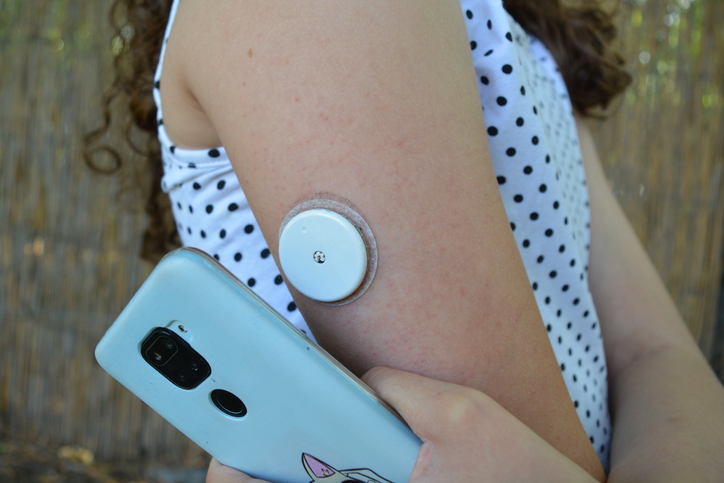CGM Lowers A1C in Children but Ethnic Disparities Remain
By Natalie Sainz
I n a recent study, results showed that improved access to CGM can lower A1C levels in Hispanic children. However, broader societal strategies are needed to address disparities in diabetes care.
n a recent study, results showed that improved access to CGM can lower A1C levels in Hispanic children. However, broader societal strategies are needed to address disparities in diabetes care.
Results from a recent study showed that providing access to CGM can improve glycemic outcomes in children with new-onset type 1 diabetes.
While CGM is associated with significant improvements in A1C and quality of life in youth with diabetes, not everyone with diabetes has access to one. Hispanic children face significantly greater barriers to accessing these life-changing devices. The study showed that rates of diabetes technology use are 50% lower among youths with type 1 diabetes from lower-income backgrounds, which contributes to a higher A1C and higher rates of diabetes complications in this population.
While providing CGM can reduce these disparities, this study further demonstrated that broader societal strategies should be implemented to address these inequities.
The study enrolled 135 children, with a median age of nine and a half years, who were offered CGM within one month after their diabetes diagnosis. Participants’ races were categorized as Asian or Pacific Islander (n=19), White (n=62), or other race (n=39), and ethnicity as Hispanic (n=29) or non-Hispanic (n=92). Additionally, 104 participants had private insurance, and 31 participants had public insurance.
A1C improvements after starting CGM in this group (known as the Pilot-4T) were compared to A1C changes from a separate group in the past – at the time, this group received the former clinical standard of care, which included new-onset diabetes education, quarterly clinic visits, and introduction to CGM at the discretion of the clinician and family.
The study primarily assessed A1C in youths with new-onset type 1 diabetes by ethnicity (Hispanic vs. non-Hispanic) or insurance status (public vs. private) and how CGM affected glucose levels. Compared with those in the historical cohort, children in the Pilot-4T cohort experienced improvements in their A1C and met A1C targets regardless of ethnicity and insurance. In ethnicity and insurance, 47% of Hispanic youths and 57% of non-Hispanic youths in the Pilot-4T cohort reached an A1C target of less than 7%, compared with 24% of Hispanic youths and 30% of non-Hispanic youths in the historical group.
Analyses also found that Hispanic youths and those on public insurance in the Pilot-4T cohort still had a higher A1C throughout their first year of diagnosis, compared to non-Hispanic youths and privately insured individuals.
Access to CGM evidently did not completely eliminate the A1C disparity by ethnicity or insurance. One year after diagnosis, TIR for Hispanic youths and those with public insurance was 57% and TIR was 65% for non-Hispanic youths and those with private insurance.
Expanding access to CGM lowered A1C levels for children, but the sustained disparity suggests other factors likely contribute to the differences. According to the authors of the study, “These data suggest that access to and use of insulin pumps may together play a role in bridging the A1C gap, particularly among Hispanic youths.”
Other factors like insurance coverage, income, education level, and implicit bias among healthcare providers may also contribute to unequal access to CGM and glycemic outcomes. In a Clinical Diabetes study, 40% of people noted lack of insurance coverage as their primary reason for not trying CGM.
Additionally, 55% of people reported CGM being “too expensive” to use. Many insurance plans do not cover CGM for all people with diabetes, and if they do, restrictive eligibility criteria can still block people from accessing one.
For more about access to CGM and racial disparities in diabetes care, see:








